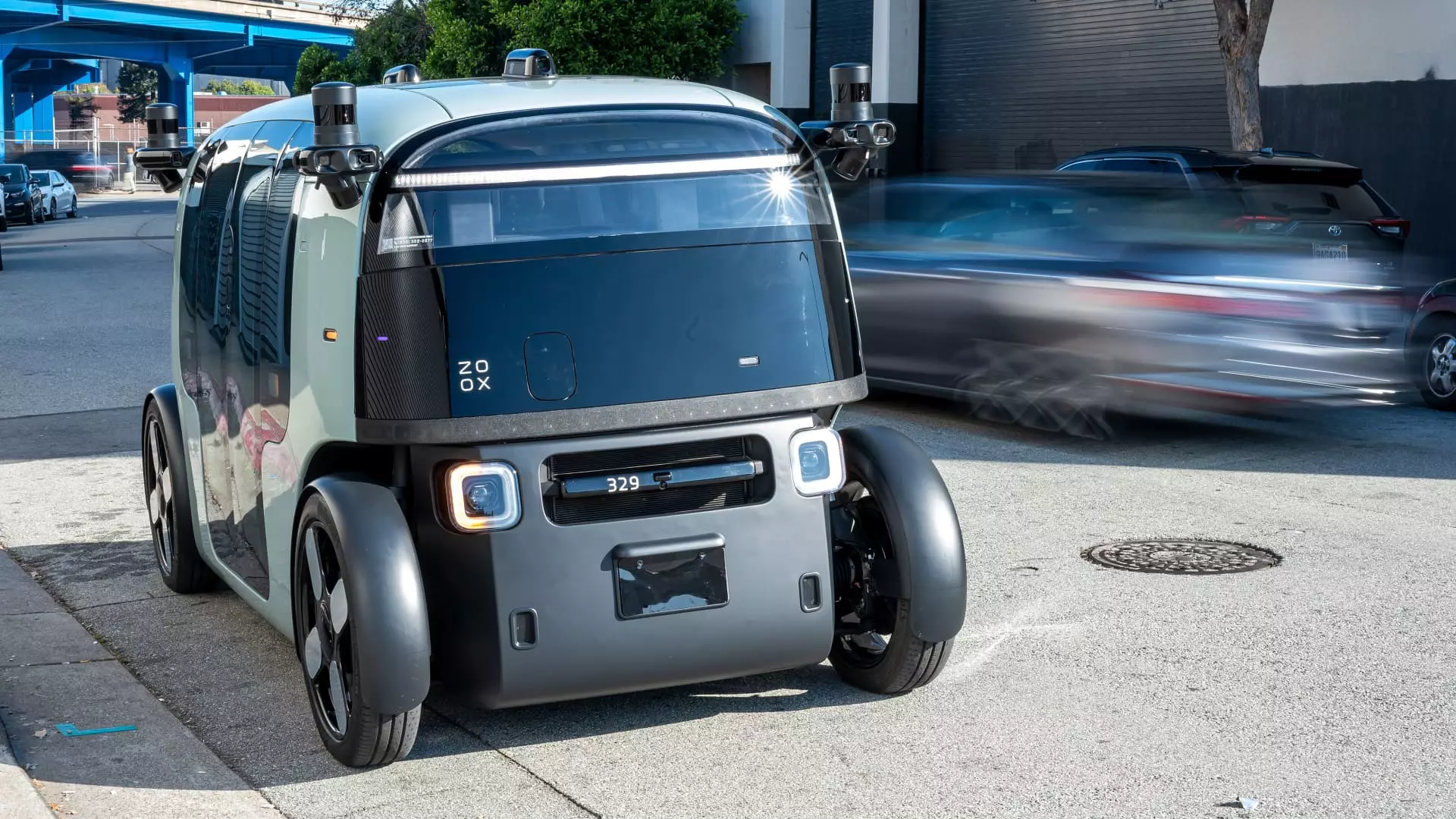As technology accelerates into uncharted territories, the realm of autonomous vehicles stands at the forefront of innovation—both exhilarating and terrifying. Amazon’s Zoox robotaxi unit recently made headlines with not just one, but two voluntary recalls in the span of a month due to safety concerns stemming from unfortunate incidents in public. This series of recalls not only casts a shadow over Zoox’s ambitions but also underscores an essential debate about safety, responsibility, and the future of transportation.
Recall 101: A Pattern or Just an Anomaly?
The two recalls of Zoox’s software raise questions about the robustness of its autonomous technology. The most recent incident occurred when an unoccupied robotaxi was struck by an electric scooter rider as it took a low-speed turn. Despite the fact that the vehicle had stopped prior to contact, the very occurrence is alarming. What does it say about our readiness to incorporate autonomous technology into everyday situations?
This isn’t just an isolated mishap. It begs further investigation into the broader implications of zoox’s automated driving systems. A pattern is emerging; the crashes that Zoox has faced hint at underlying vulnerabilities in its predictive algorithms. If their software can fail in accurately anticipating the movement of surrounding traffic, how can the public be expected to trust these vehicles on their streets?
Public Safety Concerns: A Terrifying Gamble
Zoox’s officials may downplay the incidents as mere technicalities, but when public safety is at stake, such dismissals seem irresponsible. In one of the earlier incidents, the vehicle collided with a passenger car in Las Vegas, leading to only minor damage. However, these minor incidents can lead to catastrophic consequences. Consider this: every vulnerability in autonomous vehicles could mean the difference between life and death for pedestrians and cyclists who share the road. The National Highway Traffic Safety Administration has cautioned road users to be extra vigilant around these vehicles, signaling that not everyone feels confident in their safety.
As autonomous technology inches closer to mainstream usage, it becomes essential to draw a line between innovation and public trust. A system riddled with recalls undermines any goodwill these companies may have garnered. How can we transition to a fully autonomous ride-hailing world when the current technology falters?
Corporate Strategy vs. Innovation: The Amazon Dilemma
Amazon’s decision to acquire Zoox for more than $1 billion in 2020 raised expectations around the future of autonomous ride-hailing services. Still, the reality doesn’t match the vision. Unlike its competitors, like Alphabet’s Waymo—which is already comfortably operating commercial driverless services in multiple cities—Zoox’s progress has become a cautionary tale rather than a success story.
The distance between vision and execution is critical, and Zoox appears to be stumbling in a race against time. The question is, how does Amazon leverage its vast resources to pivot back towards safety and reliability? It’s high time for corporate responsibility to take precedence over relentless innovation. The public heartily supports innovation, but only if it doesn’t come at the cost of lives.
Lessons from History: A Cold Reality Check
The journey of autonomous vehicles is filled with cautionary tales. Take General Motors-backed Cruise, which exited the robotaxi business after being implicated in an accident involving a pedestrian. Such incidents serve as sobering reminders for companies like Zoox, which should be learning from these missteps rather than racing heedlessly ahead.
The ongoing recalls could signal a critical moment in the public’s relationship with autonomous technology. Trust is not built on promises alone; it’s cultivated by transparency, accountability, and impeccable safety records. It’s crucial for Zoox and similar companies to prioritize learning from these challenges rather than rushing toward unrealistic timelines.
The Competition is Already Gaining Ground
While Zoox grapples with its self-inflicted issues, competitors such as Waymo and Tesla are advancing in the race for autonomous dominance. Both have enjoyed a safety record that promotes confidence among users and regulatory bodies alike. This begs the unsettling question: Can Zoox ever recover from a reputation tarnished by recalls and crashes?
As Amazon’s Zoox navigates this turbulent terrain, consumers are left wondering if their dreams of a driverless future will be realized or dashed by overconfidence and lack of critical self-assessment. The stakes are too high for complacency; every recall not only risks safety but jeopardizes consumer faith—and that could be the fatal blow for any company looking to lead in this brave new world.

